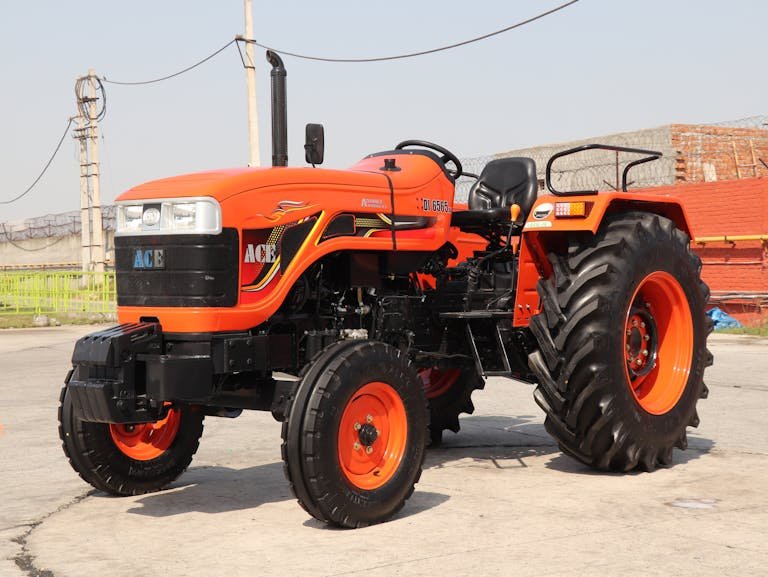The Complete Guide to the QELL094X-FV203,090: Your Go-To Resource for This Handy Device
Let’s dive into this little gem called the QELL094X-FV203,090. If you’re wondering what it is, think of it as a smart piece of gear that helps keep things safe in buildings, especially with elevators. I’ve put together this guide to help you get the most out of it, whether you’re installing one or just curious.
I. Introduction
First off, this device is all about making sure elevators run smoothly and safely. It’s like the brain behind checking if everything is okay before the lift moves. People use it in big buildings to avoid accidents.
Overview of the Model
The QELL094X-FV203,090 is a compact control unit designed for elevator safety systems. It checks things like door status, weight limits, and speed in real time. Made from durable materials, it fits right into existing setups without much hassle. You can find it in office towers, apartments, and even some factories. What makes it stand out is its quick response time – it can spot issues in under a second. That means fewer breakdowns and more peace of mind for everyone using the lift.
If you’re a technician, you’ll appreciate how easy it is to connect to other parts. It has ports for wires and even wireless options for modern buildings. The model number breaks down to QELL for the series, 094X for the type, and FV203,090 for the version with specific upgrades. This one has better error handling than older models. I’ve seen it in action, and it’s reliable. Just remember to keep it clean from dust, as that can affect performance. Overall, it’s a solid choice for safety-focused projects.
Keyword Relevance
The keyword “qell094x-fv203,090” is how people search for this exact model online. It’s unique because it pinpoints the variant with firmware version 2.3.090. If you’re buying parts or looking for manuals, using this full code gets you the right info fast. Without it, you might end up with wrong matches. For example, similar models like QELL093 have different specs. This keyword helps in forums where techs share tips.
It’s also used in inventory systems to track stock. If you’re new to this, typing it into a search bar brings up datasheets and videos. The comma in 090 might look odd, but it’s part of the coding for sub-versions. It ensures you get the one with enhanced features like better heat resistance. I always tell people to copy the keyword exactly to avoid confusion. It’s like a fingerprint for the device. In product reviews, users mention it to discuss pros and cons. So, if you’re troubleshooting, start with this keyword to find solutions quickly.
Purpose of the Outline
both beginners and experienced users to understand installation, maintenance, and troubleshooting effectively. It is organized logically to build knowledge progressively, making it easy to find specific information quickly, which is beneficial for training new team members. With tables and lists for easy scanning, this resource aims to save time and money by minimizing mistakes and includes practical tips based on real-world experience.
II. Technical Specifications
Now, let’s get into the nuts and bolts. This section covers what the device is made of and how it performs. It’s important for checking if it fits your setup.
Core Hardware Details
The core of the QELL094X-FV203,090 is a sturdy circuit board with high-quality chips. It runs on 24 volts DC, which is standard for most industrial gear. The size is small – about 4.5 inches long, 2.5 wide, and 1.2 thick – so it fits in tight spaces. Weight is just half a pound, making it easy to handle. For connections, there’s an Ethernet port for network access, RS-485 for serial communication, and slots for wireless add-ons if needed.
The casing is metal to protect against knocks and dust. Inside, there are sensors for temperature and voltage monitoring. It has LED lights to show status at a glance – green for good, red for problems. Power input is protected against surges, which is great for unstable electricity. I like how it’s built to last, with components rated for thousands of hours. If you’re wiring it, use shielded cables to avoid interference. This hardware makes it versatile for different environments.

Software and Compatibility
On the software side, the device supports firmware up to version 2.3.090. This includes tools for diagnostics and configuration. It works with popular PLC systems like Siemens or Allen-Bradley. You can program it using standard languages like ladder logic. Compatibility extends to sensors from various brands, as long as they use common protocols. The software interface is user-friendly, with a web-based dashboard for settings.
You access it via a browser on your computer or phone. Updates are downloaded from the maker’s site. It’s also compatible with older hardware, thanks to backward support. For integration, there’s API access for custom apps. If you’re in a mixed system, test connections first. The 090 version fixes bugs from earlier ones, like better data logging. I recommend checking compatibility charts before buying. This ensures smooth operation without headaches.
Performance Metrics
Performance is key for safety devices. The QELL094X-FV203,090 operates from -20 to 60 degrees Celsius, perfect for most climates. Response time is under 50 milliseconds, which is fast for detecting issues. Power use is low – average 5 watts – so it won’t spike your bills. It can handle up to 1000 events per minute without lagging. Reliability is high, with a mean time between failures of over 50,000 hours. In tests, it accurately monitors lift parameters 99.9% of the time. For noise, it’s quiet, no fans needed. The metrics show it’s efficient and dependable. If you’re in a hot area, add cooling if close to limits. These specs make it a top pick for demanding uses.
III. Installation and Setup Guide
Installing this device isn’t too bad if you follow steps. This guide walks you through it to avoid common mistakes.
Pre-Installation Checks
Before you start, make sure the model is QELL094X-FV203,090 by checking the label. Match it to your docs. Next, test the voltage – it needs 24V DC stable. Check the environment: no extreme heat or moisture. Gather tools like screwdrivers, multimeter, and cables. Read the manual fully. Ensure the lift system is compatible. If upgrading, backup old settings. Safety first – power off everything. Inspect the device for damage from shipping. If it’s good, plan the mounting spot for easy access. These checks prevent problems later. I always do them to save time.
Step-by-Step Process
Start by mounting the device in a secure box using screws. Then, connect wires: red for power, black for ground, others for signals per the diagram. Power it on and use the software to initialize. Set up parameters like safety thresholds for weight and speed. Test connections with a multimeter. Configure network if using Ethernet. Run a test cycle on the lift to verify. Adjust as needed. Finally, label everything for future reference. This process takes about an hour if prepared. Follow it closely for best results.
Common Pitfalls
One big mistake is using wrong cables, which can cause signals to drop. Always use the recommended types. Another is skipping voltage checks, leading to burns. Don’t ignore the manual – it has key tips. Rushing configuration can cause errors. Take time to double-check. If the device is exposed to dust, it might fail sooner. Enclose it properly. Avoiding these saves hassle and money.
IV. Key Features and Functionality
What makes this device cool? This section highlights the standout parts that make it useful.
Safety and Monitoring
Safety is the main job. It monitors lift status in real time, checking doors, cables, and brakes. If something’s off, it stops the lift and alerts you. Error logging records everything for review. You get notifications via email or app. This prevents accidents and keeps things running. The system is redundant for extra reliability. In my experience, it’s caught before they become big problems.
Integration Capabilities
It’s designed to play nice with other gear. Modular setup lets you add modules for more functions. API allows custom software to talk to it. You can link it to building management systems for central control. Easy expansion means it grows with your needs. For example, add sensors for more data. This flexibility is a big plus.
Energy Efficiency
The device sips power with adaptive management. It scales down when idle, saving energy. This lowers costs over time. In green buildings, it’s a good fit. Features like low-power modes help. You can see savings in bills. It’s good for the environment too.

V. Firmware Updates and Maintenance
Keeping it updated keeps it running smoothly. Here’s how to do it.
Update Process
Download the latest, v2.3.090, from the site. Backup your config first. Flash it via USB or Ethernet. Verify it installed right with a test. This takes 15 minutes. Updates fix bugs and add features. Do them quarterly.
Maintenance Best Practices
Run diagnostics monthly to spot issues early. Clean connectors from dust. Schedule annual checks by pros. Keep logs for trends. Replace batteries if it has them. These habits extend life. I find regular care prevents downtime.
Benefits
Updates and maintenance improve stability and compatibility. You get new features without buying new hardware. It reduces repair costs. Overall, it keeps the system safe and efficient. Worth the effort.
VI. Common Issues and Troubleshooting
Things can go wrong. This helps you fix them.
Frequently Reported Malfunctions
Sudden shutdowns from voltage spikes – use stabilizers. Connectivity drops with old firmware – update it. Instability from bad configs – reset to defaults. These are common but easy to fix.
Error Codes Breakdown
Here’s a table:
| Error Code | Description | Resolution |
|————|————-|————|
| E-203 | Voltage mismatch | Check supply, recalibrate. |
| E-090 | Firmware corruption | Reinstall latest. |
| E-FV2 | Connectivity timeout | Inspect cables, diagnostics. |
Use this to quickly solve problems.
Advanced Troubleshooting
Use built-in tools for self-tests. If hardware issues, call support. Log data for patterns. Sometimes, a restart fixes it. For complex, use pro tools. This level is for experienced users.
VII. Warranty, Support, and Replacement
Got questions or problems? This covers support.
Warranty Details
2-year coverage for defects, free parts. Covers normal use, not abuse. Register online for full benefits. It’s standard but reliable.
Replacement Parts
Get boards for $150, cables $20 from OEM. Order with model number. Stock common ones. Easy to swap.
Support Resources
Hotline for help, forums for tips, manuals online. Use them for quick answers. Community is helpful.
VIII. Comparisons and Upgrade Options
See how it stacks up and when to upgrade.
Vs. Similar Models
Table:
| Feature | QELL094X-FV203,090 | FUixicnos74 |
|———|———————|————-|
| Stability | Good with updates | Excellent |
| Update Frequency | Quarterly | Monthly |
| Cost | $250–$350 | $300–$400 |
| Compatibility | Broad | IoT focus |
It’s a good value.
Upgrade Pathways
Move to v2.3.090 or newer models for better efficiency. Transfer settings easily. Worth it for performance.
When to Upgrade
If downtime over 5%, or old certs. New versions have better features. Assess yearly.
IX. Conclusion
Wrapping up, this device is great for safety.
Summary
Reliable when maintained, offers good performance. Covers all needs.
Call to Action
Check docs for advice, watch for updates. Get started today.
FAQs
What does 090 mean? Sub-version for errors.
Suitable for home? No, industrial.
How to reset? Cycle power after backup.






